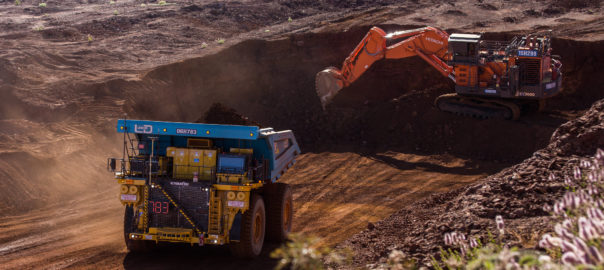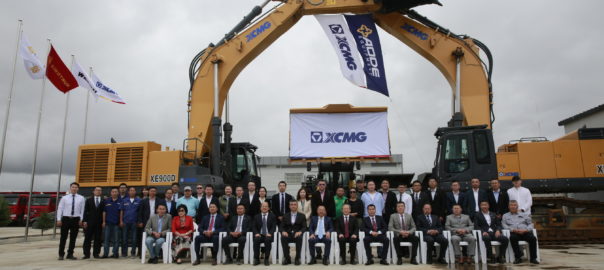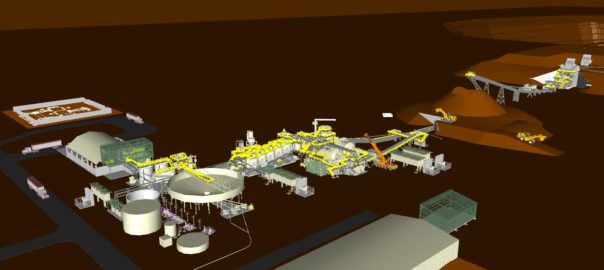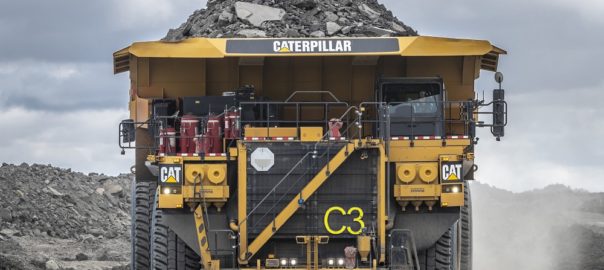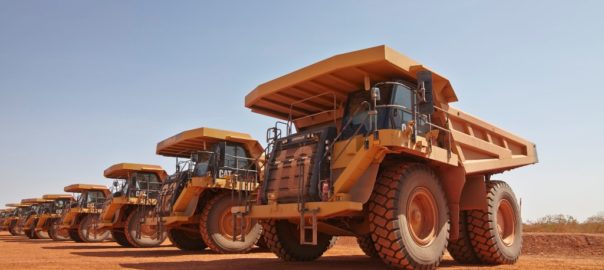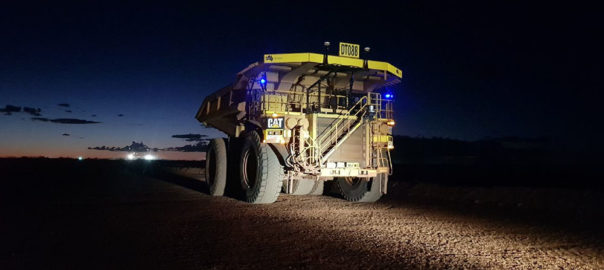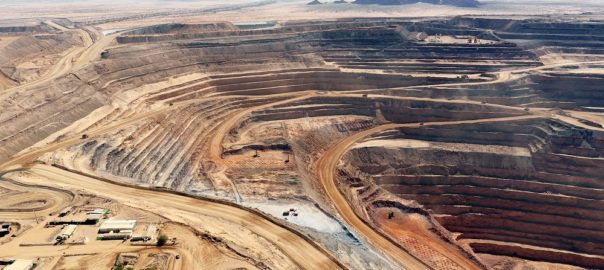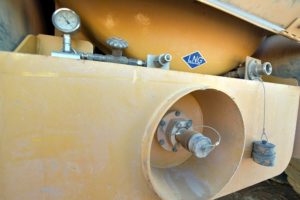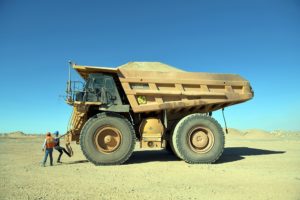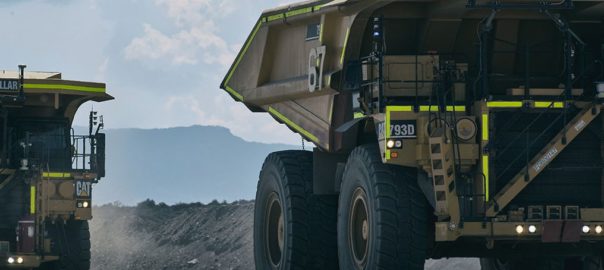A presentation at last month’s AusIMM Iron Ore 2019 Conference, in Perth, Western Australia, made it clear that the state’s steel raw material miners are leading the way when it comes to applying autonomous haulage systems (AHS) in open-pit mining.
Richard Price, Manager of Projects for Mining Technicians Group Australia (MTGA), has been involved in this technology space for a number of years, having initially witnessed an automation trial involving two trucks at Alcoa’s Willowdale bauxite mine, in Pinjarra, all the way back in 1994.
At the conference, his paper set out the state of play in Pilbara when it comes to AHS, explaining: the first commercial scale trial in iron ore took place at Rio Tinto’s West Angelas operation in 2008, there are two original equipment manufacturer (OEM) AHS operating in the Pilbara – Caterpillar Command for Hauling and the Komatsu FrontRunner – and the three major iron ore miners (Rio Tinto, BHP and Fortescue Metals Group (FMG)) were leaders when it comes to using autonomous trucks.
FMG is the largest operator of autonomous trucks in the Pilbara – making it effectively the largest in the world – with 128 at the end of June (according to the miner’s June quarter results). Rio, meanwhile, had 96 up and running, with BHP having a total of 50, as per publicly released data.
“FMG has plans to automate all of their trucks, including the first non-OEM trucks on an alternate OEM system,” Price said, with him adding that the company has now automated a number of Komatsu 930E vehicles using the Caterpillar Command for Hauling AHS: a world first.
“Additionally, FMG is also operating multiple Caterpillar OEM trucks onsite, in another world first having three classes of truck on the one system at the same site (789D, 793F and 930E),” he said.
While Komatsu, historically, has more time in the field with commercial autonomous applications – it surpassed 2 billion tons of autonomous haulage in November – than Caterpillar, the Illinois-based OEM has received more global success, being able to point to AHS deployments in the oil sands of Canada, the coal mines of British Columbia and Vale’s iron ore operations in Brazil.
“With regards to the on-board AHS componentry, the Komatsu system is somewhat simpler than the Caterpillar system,” Price said. “The significant difference is that Caterpillar utilises a LiDAR (Velodyne 64-layer), with RADAR, whilst the Komatsu system uses RADAR only. However there are additional differences in the on-board controls – the Caterpillar system is known for having more significant vehicle on-board computing power, versus the Komatsu system which places greater reliance on the wireless network whilst performing most of the calculations on the server side.”
Even with the on-board computing power of Caterpillar’s system, the performance of these trucks only tends to be as good as the communications infrastructure they are tied to.
Presently, only the Komatsu system has announced successful trials of using 4G Long Term Evolution (LTE) network technology as the communications system which commands the trucks, with the Caterpillar system presently reliant on wireless networking technology, “of which all current implementations rely upon (globally)”, Price said.
One of the issues with such technologies is the trucks stop driving, or operating, if they lose communications, with the trucks communicating, via this network, their position to each other and directional heading and speed.
The way the trucks re-start their driving routine is, at present, via manual visual inspection, which can be a process that takes time.
And, according to Price, a significant problematic issue with trucks stopping driving across all the Pilbara sites is the triggering of a false positive object detection.
“These are often referred to as ‘ODs’ on the various sites which utilise AHS,” Price said, with many operators blaming undulations in the road, pot holes, or small rocks for these occurrences.
Again, manual inspection is normally required as part of an operation’s procedure for re-starting the autonomous trucks.
Out in front
Despite these communication and OD problems, Western Australia still leads the way when it comes to automation with the Pilbara hosting around 75% of the circa-370 trucks operating globally.
What is the reason for this? Price highlighted five bullet points in his speech:
- High cost of operators – annual salaries for truck operations are, in general, over A$100,000 ($68,882);
- Ease of implementation – “the Pilbara miners generally have open ground, and have had an opportunity to trial the technology in a dedicated work area prior to a site-wide implementation,” Price said, adding that the topography has also made it simpler to install the required communications systems;
- Scale and longevity of operations – Previously cost-benefit analysis of AHS included an approximate cutoff point of 12 Mt/y total material movement, which equates to six to eight off-highway haul trucks, Price said. All operations exceed this, as well as having long mine lives;
- The fact that all the sites which have presently deployed AHS are currently fly-in/fly-out mines which transport the staff to site from their point-of-hire, and;
- Experience of technology and processes in the Pilbara – miners in the region have long-term familiarity with fleet management systems and technology adoption.
Price said: “Western Australia does not necessarily have any unique or special advantage, however, it has made sense for Pilbara iron ore operators to implement AHS for the reasons outlined above.”
The benefits
MTGA’s Price pointed to several quotes from the mining companies themselves to explain the benefits of automation.
Rio Tinto, in 2018, said: “On average, each autonomous truck was estimated to have operated about 700 hours more than conventional haul trucks during 2017 and around 15% lower load and haul unit costs.”
FMG, in the same year, said it was seeing 32% productivity improvements with autonomous trucking.
Vale, meanwhile, previously told Mining.com: “The adoption of autonomous trucks at Brucutu (iron ore mine, in Brazil) is expected to reduce fuel consumption by more than 10%. Maintenance costs, in turn, should fall by another 10% and off-road truck tyres, which cost up to $40,000, are expected to have 25% lower wear. The overall gains translate into a 15% increase in equipment life, reducing investments in new acquisitions and reducing carbon dioxide emissions at the same time.”
Price said: “There are clearly differing metrics being monitored by these three operators at present. However, irrespective of the metrics monitored, AHS obviously has had a significant impact on the operating environment.
“It appears that the increase in utilisation of the autonomous trucks is the most significant benefit that they provide. The decrease in costs is also helpful, but the increase in predictability of the truck fleet is what drives the actual benefit.
“A number of materially measurable but difficult to quantify benefits exist from the rendering of trucks autonomous as well. These include less maintenance, better tyre wear (or increased tyre life), reduced fuel costs (for the same tonnage output) and better overall truck performance.”
For instance, Komatsu has previously said the optimised automatic controls of AHS reduce sudden acceleration and abrupt steering, resulting in a 40% improvement in tyre life compared with conventional operations.
And, of course, there are the numerous safety benefits that come with using automated haul trucks.
The future
While Price believes that mining will continue to become more autonomous, he said the mine of the future was likely to involve the automatic distribution of data files that trucks would work off without human involvement.
“For now, technologies such as LTE for better communications network coverage, the use of drones, long-range cameras or other autonomous ground vehicles to conduct the manual visual inspection and other autonomous equipment will be implemented,” he said.
He added: “It is likely that there will be a continuum of development over the next 20-30 years.
“Mining companies and OEMs will have a lot to learn from automotive vehicle automation. Obviously, there are more cars on the roads than there are off-highway haulage trucks on minesites. Therefore the general costs of automation kits will come down, and there will be an opportunity to conduct operations in a GPS-denied environment.
“Already, the costs of select items such as the LiDAR utilised by the Caterpillar system have halved in price since they were used a decade ago. Solid state LiDARs, as opposed to rotational, are being implemented in the automotive industry already.”
He pointed to MINExpo 2016, in Las Vegas, when Komatsu showcased its cabless, driverless truck as one development to look out for.
“It is predicted that in the longer-term future (ie 20-30 years’ time), cabs will be an additional and expensive option to add onto an off-highway heavy haulage truck,” he said.
“Whilst the future is autonomous, it will be technologically more advanced than the present technologies,” he concluded, adding that, given its head start, one would expect the Pilbara iron ore industry to deploy these technologies first.
MTGA’s Richard Price has also written a business case study on AHS, published by AusIMM – www.ausimmbulletin.com/feature/autonomous-haulage-systems-the-business-case/ – and, in partnership with Whittle Consulting’s Nick Redwood, put together an Autonomous Haulage Systems Financial Model Assessment – www.whittleconsulting.com.au/wp-content/uploads/2017/10/Autonomous-Haulage-Study-Report-Rev-F.pdf







